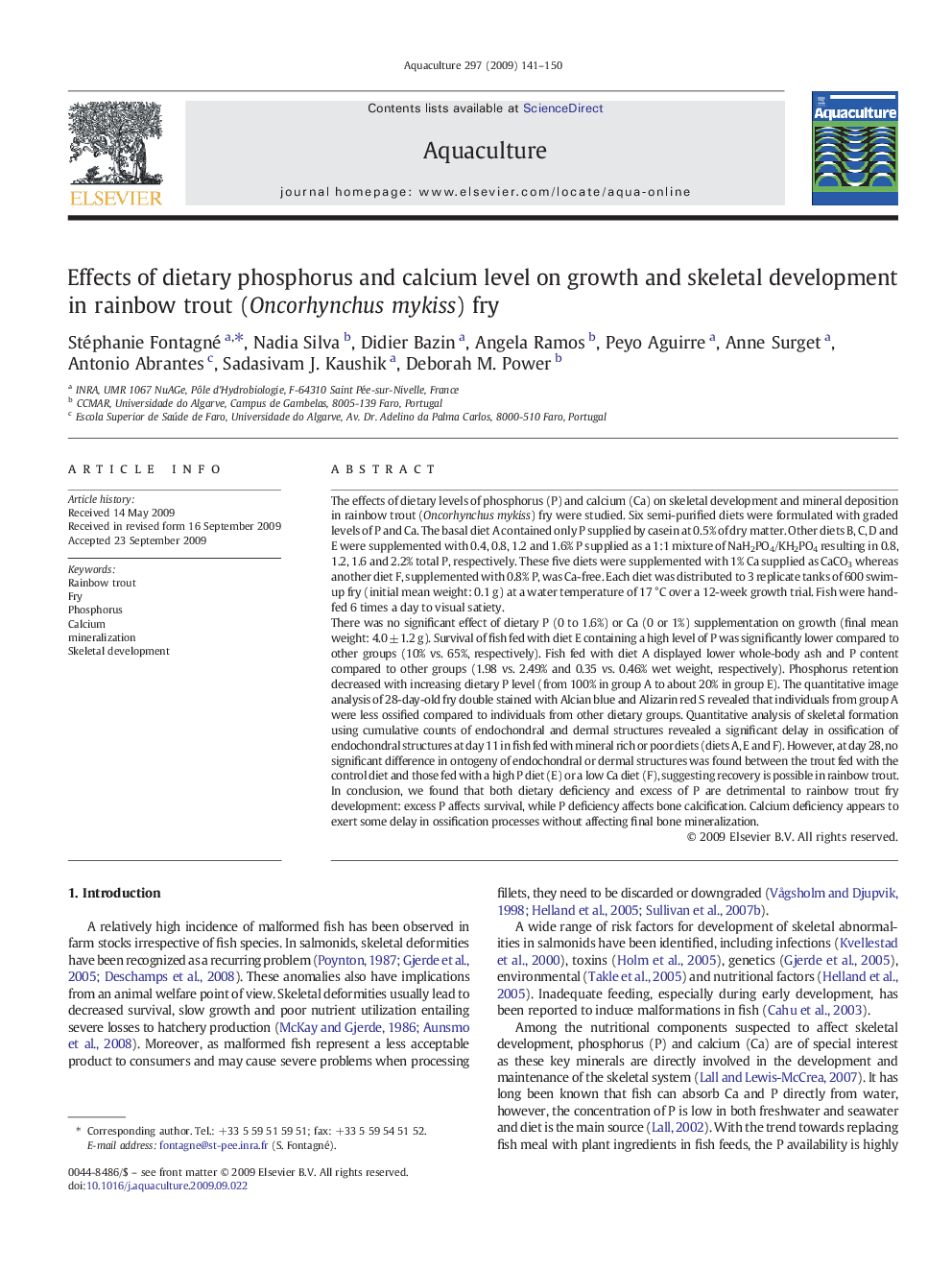| Article ID | Journal | Published Year | Pages | File Type |
|---|---|---|---|---|
| 2423809 | Aquaculture | 2009 | 10 Pages |
The effects of dietary levels of phosphorus (P) and calcium (Ca) on skeletal development and mineral deposition in rainbow trout (Oncorhynchus mykiss) fry were studied. Six semi-purified diets were formulated with graded levels of P and Ca. The basal diet A contained only P supplied by casein at 0.5% of dry matter. Other diets B, C, D and E were supplemented with 0.4, 0.8, 1.2 and 1.6% P supplied as a 1:1 mixture of NaH2PO4/KH2PO4 resulting in 0.8, 1.2, 1.6 and 2.2% total P, respectively. These five diets were supplemented with 1% Ca supplied as CaCO3 whereas another diet F, supplemented with 0.8% P, was Ca-free. Each diet was distributed to 3 replicate tanks of 600 swim-up fry (initial mean weight: 0.1 g) at a water temperature of 17 °C over a 12-week growth trial. Fish were hand-fed 6 times a day to visual satiety.There was no significant effect of dietary P (0 to 1.6%) or Ca (0 or 1%) supplementation on growth (final mean weight: 4.0 ± 1.2 g). Survival of fish fed with diet E containing a high level of P was significantly lower compared to other groups (10% vs. 65%, respectively). Fish fed with diet A displayed lower whole-body ash and P content compared to other groups (1.98 vs. 2.49% and 0.35 vs. 0.46% wet weight, respectively). Phosphorus retention decreased with increasing dietary P level (from 100% in group A to about 20% in group E). The quantitative image analysis of 28-day-old fry double stained with Alcian blue and Alizarin red S revealed that individuals from group A were less ossified compared to individuals from other dietary groups. Quantitative analysis of skeletal formation using cumulative counts of endochondral and dermal structures revealed a significant delay in ossification of endochondral structures at day 11 in fish fed with mineral rich or poor diets (diets A, E and F). However, at day 28, no significant difference in ontogeny of endochondral or dermal structures was found between the trout fed with the control diet and those fed with a high P diet (E) or a low Ca diet (F), suggesting recovery is possible in rainbow trout.In conclusion, we found that both dietary deficiency and excess of P are detrimental to rainbow trout fry development: excess P affects survival, while P deficiency affects bone calcification. Calcium deficiency appears to exert some delay in ossification processes without affecting final bone mineralization.
